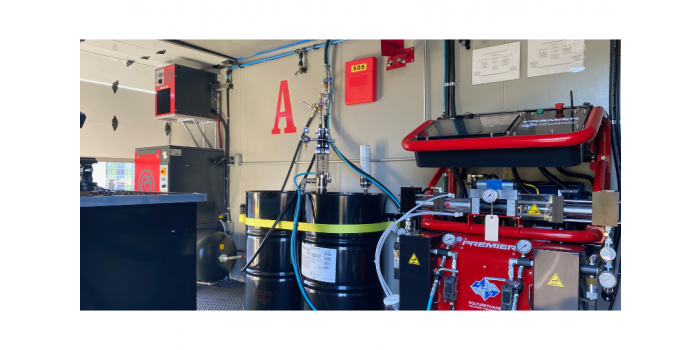Federal Tax Credit
November 29, 2022
Spray foam rig pressure imbalances can be a major headache for professionals in the insulation industry. These issues can lead to poor-quality foam application, wasted materials, and costly project delays. Proper troubleshooting and maintenance of spray foam equipment are essential for ensuring optimal performance and avoiding common pitfalls.
Temperature fluctuations, clogged parts, and incorrect pressure settings are frequent culprits behind spray foam rig problems. Recognizing the signs of these issues, such as abnormal foam expansion or changes in color and texture, allows technicians to address problems quickly and efficiently. Regular cleaning of hoses, guns, and other components helps prevent blockages that can disrupt the delicate balance of foam mixture ratios.
Monitoring pressure gauges is crucial for maintaining the ideal spray conditions. Most spray foam systems operate best with equal pressures between 1200 and 1800 psi on both the A-side and B-side. Frequent checks of these gauges can help identify potential issues before they escalate into more serious problems, ensuring consistent foam quality and application.
Spray foam rig pressure imbalances can significantly impact the quality and performance of polyurethane foam applications. Proper diagnosis and addressing of these issues are crucial for achieving optimal results.
Several factors can contribute to pressure imbalances in spray foam rigs:
Identifying pressure imbalances requires vigilant monitoring and troubleshooting:
Key indicators of pressure imbalance:
If pressure imbalance persists, inspect Y strainers for blockages and clean them as needed. Change pump lubricant when it becomes cloudy or weekly, whichever comes first.
Proper diagnosis and prompt action can prevent poor-quality applications and potential equipment damage.

Spray foam rig pressure imbalances and other SPF issues can significantly impact insulation quality and productivity. Proper equipment calibration, effective troubleshooting techniques, and following operational best practices are crucial for maintaining optimal performance.
Regular calibration of spray foam equipment is essential for consistent results. Check and adjust pressure gauges, temperature controls, and flow meters frequently. Clean spray guns, hoses, and pumps after each use to prevent clogging and contamination.
Inspect seals, O-rings, and fittings for wear or damage. Replace worn parts promptly to avoid leaks and pressure drops. Keep detailed maintenance logs to track equipment performance and identify recurring issues.
Ensure proper storage of chemicals and equipment when not in use. Protect sensitive components from extreme temperatures and moisture.
Identifying the root cause of SPF issues requires a systematic approach. Start by checking pressure readings on both A and B sides of the system. Uneven pressures often indicate pump or heater problems.
Monitor chemical temperatures closely. Incorrect temperatures can lead to poor foam expansion or adhesion. Adjust heaters as needed to maintain proper viscosity.
Examine spray patterns for irregularities. Uneven patterns may signal clogged nozzles or improper gun setup. Clean or replace affected components as necessary.
For persistent issues, consult equipment manuals or contact manufacturer support for guidance.
Train operators thoroughly on equipment operation and safety procedures. Proper technique is crucial for achieving consistent results.
Conduct pre-job equipment checks to ensure all components are functioning correctly. This includes verifying chemical ratios and temperatures.
Use appropriate personal protective equipment (PPE) at all times. This protects operators and helps maintain a clean working environment.
Regularly test foam samples for quality control. Monitor density, cell structure, and adhesion to catch potential issues early.
Keep detailed records of job parameters, including ambient conditions and equipment settings. This information is valuable for troubleshooting and optimizing future projects.